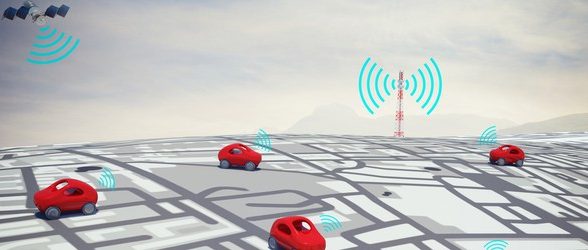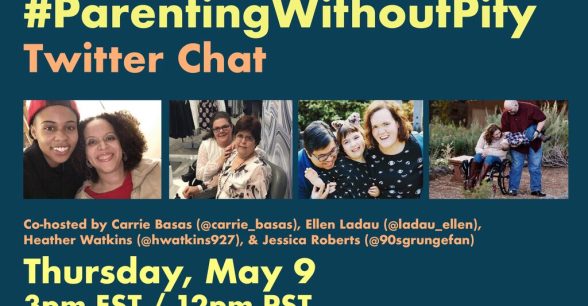My Disabilities Make Me Both Broken and Whole
A dichotomy is defined as a contrast between two things. It is two stones with a gulf between them, two planets on opposite sides of the sun, two opinions, two political parties, two opposites. And in my case, one person. I am a dichotomy inside my own self. I am a dichotomy in the disability community. And you know what? That is perfectly okay.
On the one hand, I am autistic. I correct people when they say that I have autism – I am autistic because every cell in my body is autistic, because the way that my limbs move and my nerve endings feel and my brain processes everything is autistic. I am autistic because it is a crucial part of my understanding of myself. I am autistic because, as autistic self-advocate Ari Ne’eman famously said, “If I’m on a flight and the airline loses my luggage, I don’t arrive without my autism.”
On the other hand, I have mental illnesses. I have learning disabilities. I have chronic pain. I do not define myself by these parts of my brain and body, and the distinction is important to me. I believe that this is rooted in the fact that, growing up, I internalized the ableism around me. People in pain were lazy. Learning disabilities just meant that you had to work harder. Mental illness was something that you should suck up and get over. Moreover, they were all something to be ashamed of. In my New England, WASP upbringing, you spent an hour a day outdoors, no matter what the weather, because it was good for you. Similarly, you didn’t complain about mental or physical health issues because nobody wanted to hear it, and you should just accommodate yourself.
Decades later, I still feel that shame. My depression was never spoken of, either, and neither were my other difficulties which I now know to be learning and mental health disabilities. Autism was certainly never mentioned except in the occasional mention of this or that savant on the news. Therefore, the impression that I got of autism growing up was fairly positive and certainly not negative. Before the internet, the stories about autism tended to be happy ones full of hope, and by the time I was officially diagnosed in my mid-twenties, the self-advocacy movement had been in full swing for over a decade. My first encounters with other autistic people were with those who were self-assured, secure advocates. And although I resisted the label at first, repeated encounters with people who were happy to call themselves autistic soon changed my mind. I could be autistic. It wasn’t a bad thing.
I think a lot of the controversy around person-first language (i.e., “person with autism”) and identity-first language (i.e., “autistic person”) has historically come when non-disabled people choose what language to use for disabled people, but it is also deeply tied into the stigma and negative stereotypes associated with certain types of disabilities. Because I struggle with mental illness, because I see it as a bad thing, it cannot be part of my identity, and so I call myself a person with mental illness. Because I love the autism community, because I have found a home there, because I seek to emulate many awesome self-advocates I know, I am autistic.
Like many people, but especially autistic people, I would prefer my world to be black and white, either or. I don’t want to deal in shades of gray, because it is harder. It takes more effort and energy, and my brain can’t quite work my head around it. Yet just as I am a dichotomy in the disability world, I’m a dichotomy in other parts of my life, too. I’m an atheist, yet I go to church every week. My Unitarian Universalist congregation means the world to me, and it is there that a minister preached on the idea of people being both broken and whole, and how you can be both at the same time.
I loved that. I didn’t love that minister, but I loved that idea, and I have carried it with me for years. I am a piece of china with a large chip – I am broken but I am whole. I am a body that functions as best I can. I can walk and swim one day, and do nothing on another because I am in too much pain. I can spend hours researching a subject I am interested in and wander off the moment I hear baseball (or let’s be honest, any sport) mentioned because I am so bored by it.
The disability community is made up of people who are, like me, a study in dichotomies, both broken and whole. The wonderful thing about the disability community is that we are willing to expend the effort to live in the gray. We can see ourselves for who we really are, and by whatever label or non-label we wish to have. We may be dichotomies but we can always find common ground to come together.
About Rooted In Rights
Rooted in Rights exists to amplify the perspectives of the disability community. Blog posts and storyteller videos that we publish and content we re-share on social media do not necessarily reflect the opinions or values of Rooted in Rights nor indicate an endorsement of a program or service by Rooted in Rights. We respect and aim to reflect the diversity of opinions and experiences of the disability community. Rooted in Rights seeks to highlight discussions, not direct them. Learn more about Rooted In Rights




Thank you for opening the door to a greater understanding of life with a disability. I love the analogy of the whole but chipped cup . We all are in one form or another most dont see it